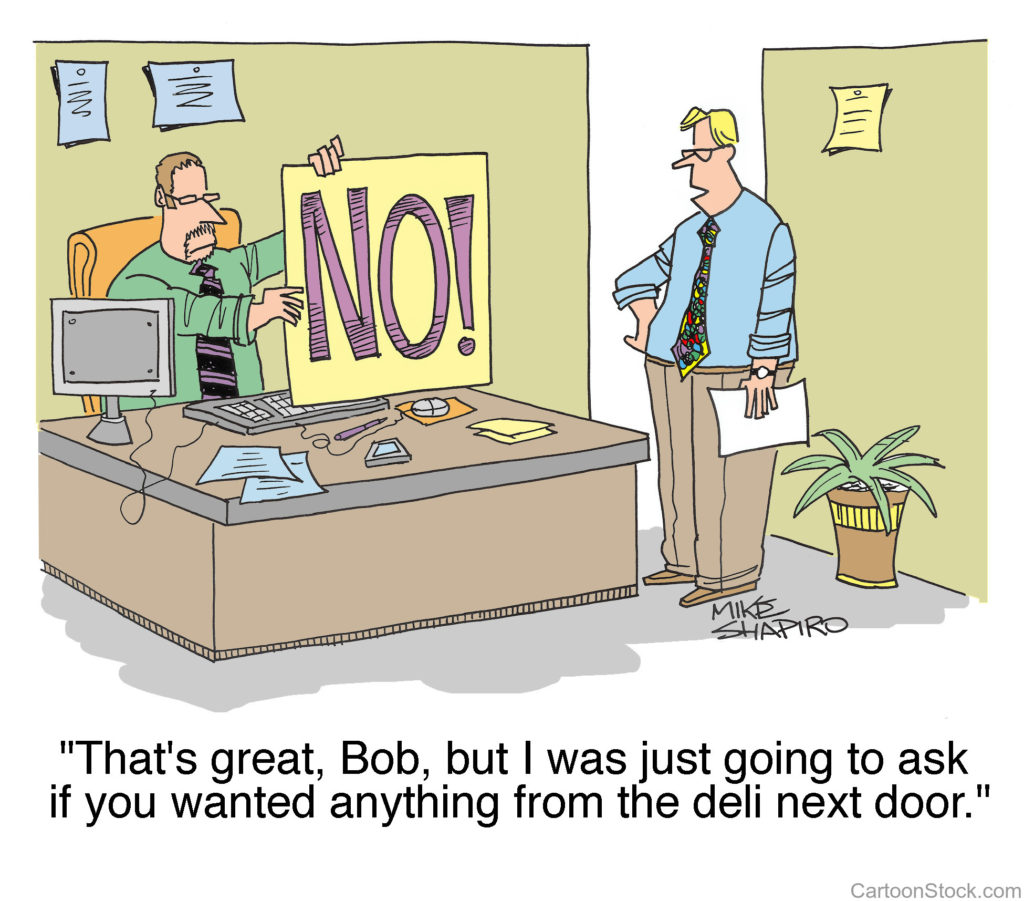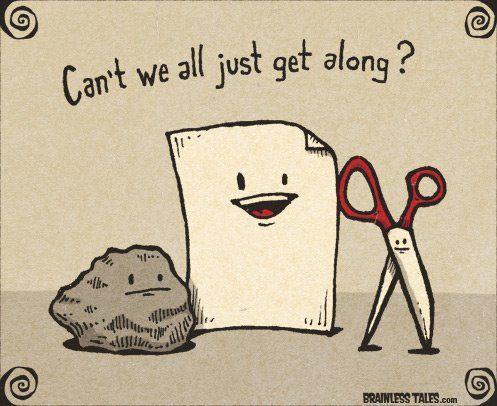 In a 50/50 relationship—where each person has equal authority—a “no” is more powerful than a “yes.” For instance, in a marriage in which the 50/50 rule is in place, if one spouse says, “Let’s go out to eat on Friday,” and the other says, “No; I don’t want to,” the latter rules. “No” trumps “yes.”
In a 50/50 relationship—where each person has equal authority—a “no” is more powerful than a “yes.” For instance, in a marriage in which the 50/50 rule is in place, if one spouse says, “Let’s go out to eat on Friday,” and the other says, “No; I don’t want to,” the latter rules. “No” trumps “yes.”
This seems unfair to me.
This quirkish adulteration of fairness is particularly potent and unsavory when one person in the 50/50 relationship tends to be negative and pessimistic, or controlling, or indecisive, or inordinately passive.
How can we avoid this situation?
- One obvious way is to avoid 50/50 relationships. Just one degree—a 51/49 relationship—can make a difference. (Just hope you possess that extra one percent.)
- Spread the power among three or more people, perhaps a 33/33/34 scenario, so that one person cannot control.
- Establish a measure of independence in decision making; don’t frame an issue in terms that require consensus: “I’m going out to eat on Friday. Would you like to join me?”
- Carefully craft the initial statement such that you can say “no.” You: “What would you like to do on Friday for dinner?” Other person’s reply: “Stay at home.” You: “No, I don’t want to do that.” In which case your “no” might prevail over the other person’s preference.
I’m not advocating that we become manipulative and self-serving. I am suggesting that we avoid being manipulated and controlled and that we establish balance of power in mutual relationships.
[reminder]What are your thoughts about this essay?[/reminder]

 At work and at home, conflicts are inevitable. We are imperfect people living in an imperfect world. So don’t be surprised when relationships are strained, but do proactively try to resolve the conflicts.
At work and at home, conflicts are inevitable. We are imperfect people living in an imperfect world. So don’t be surprised when relationships are strained, but do proactively try to resolve the conflicts. Last summer, I boarded a flight from Dallas/Ft. Worth to Seattle. I had priority boarding so I was among the first passengers on the plane. Normally this is a good thing but not in this instance because the plane was stiflingly hot.
Last summer, I boarded a flight from Dallas/Ft. Worth to Seattle. I had priority boarding so I was among the first passengers on the plane. Normally this is a good thing but not in this instance because the plane was stiflingly hot.